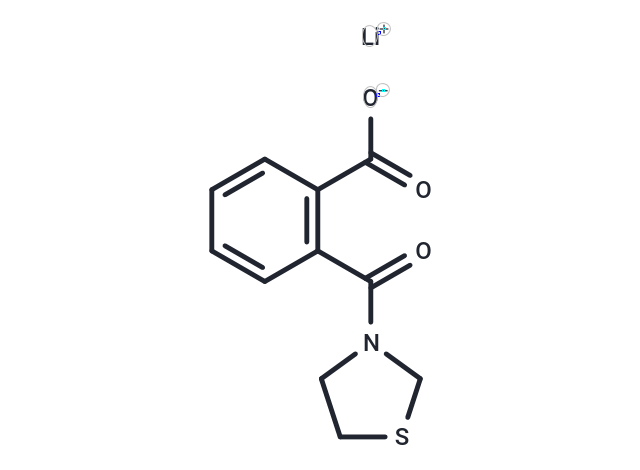Shopping Cart
Remove All Your shopping cart is currently empty
Your shopping cart is currently empty
Nesosteine Lithium is a novel mucoregulatory that inhibits Herxheimer microconvulsions in guinea pigs and inhibits ovalbumin-induced histamine release from sensitized trachea.Nesosteine Lithium protects against ovalbumin-induced bronchospasm but is ineffective against histamine- and acetylcholine-induced bronchospasm. Nesosteine Lithium protected against ovalbumin-induced bronchospasm but not histamine- and acetylcholine-induced bronchospasm.

| Pack Size | Price | USA Warehouse | Global Warehouse | Quantity |
|---|---|---|---|---|
| 1 mg | $147 | - | In Stock | |
| 5 mg | $348 | - | In Stock | |
| 10 mg | $475 | - | In Stock | |
| 25 mg | $667 | - | In Stock | |
| 50 mg | $887 | - | In Stock | |
| 100 mg | $1,220 | - | In Stock | |
| 200 mg | $1,630 | - | In Stock |
| Description | Nesosteine Lithium is a novel mucoregulatory that inhibits Herxheimer microconvulsions in guinea pigs and inhibits ovalbumin-induced histamine release from sensitized trachea.Nesosteine Lithium protects against ovalbumin-induced bronchospasm but is ineffective against histamine- and acetylcholine-induced bronchospasm. Nesosteine Lithium protected against ovalbumin-induced bronchospasm but not histamine- and acetylcholine-induced bronchospasm. |
| In vitro | Nesosteine (10(-5) M) inhibits ovalbumin-induced histamine release in the trachea of sensitized animals. In the same preparation, the drug is ineffective against the contractions induced by histamine or acetylcholine.[2] |
| In vivo | Nesosteine (5-50 mg/kg; guinea-pigs) is able to protect sensitized animals from ovalbumin-induced bronchospasm. On the other hand, the drug is ineffective against the bronchospasm induced by histamine and acetylcholine.[2] |
| Synonyms | Nesosteine Lithium(84233-61-4 Free baes) |
| Molecular Weight | 243.22 |
| Formula | C11H10LiNO3S |
| Smiles | O=C([O-])C1=C(C=CC=C1)C(N2CSCC2)=O.[Li+] |
| Relative Density. | no data available |
| Storage | Powder: -20°C for 3 years | In solvent: -80°C for 1 year | Shipping with blue ice/Shipping at ambient temperature. | |||||||||||||||||||||||||
| Solubility Information | DMSO: 7.5 mg/mL (30.84 mM), Sonication is recommended. | |||||||||||||||||||||||||
Solution Preparation Table | ||||||||||||||||||||||||||
DMSO
| ||||||||||||||||||||||||||
| Size | Quantity | Unit Price | Amount | Operation |
|---|

Copyright © 2015-2026 TargetMol Chemicals Inc. All Rights Reserved.